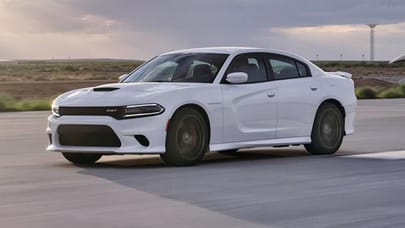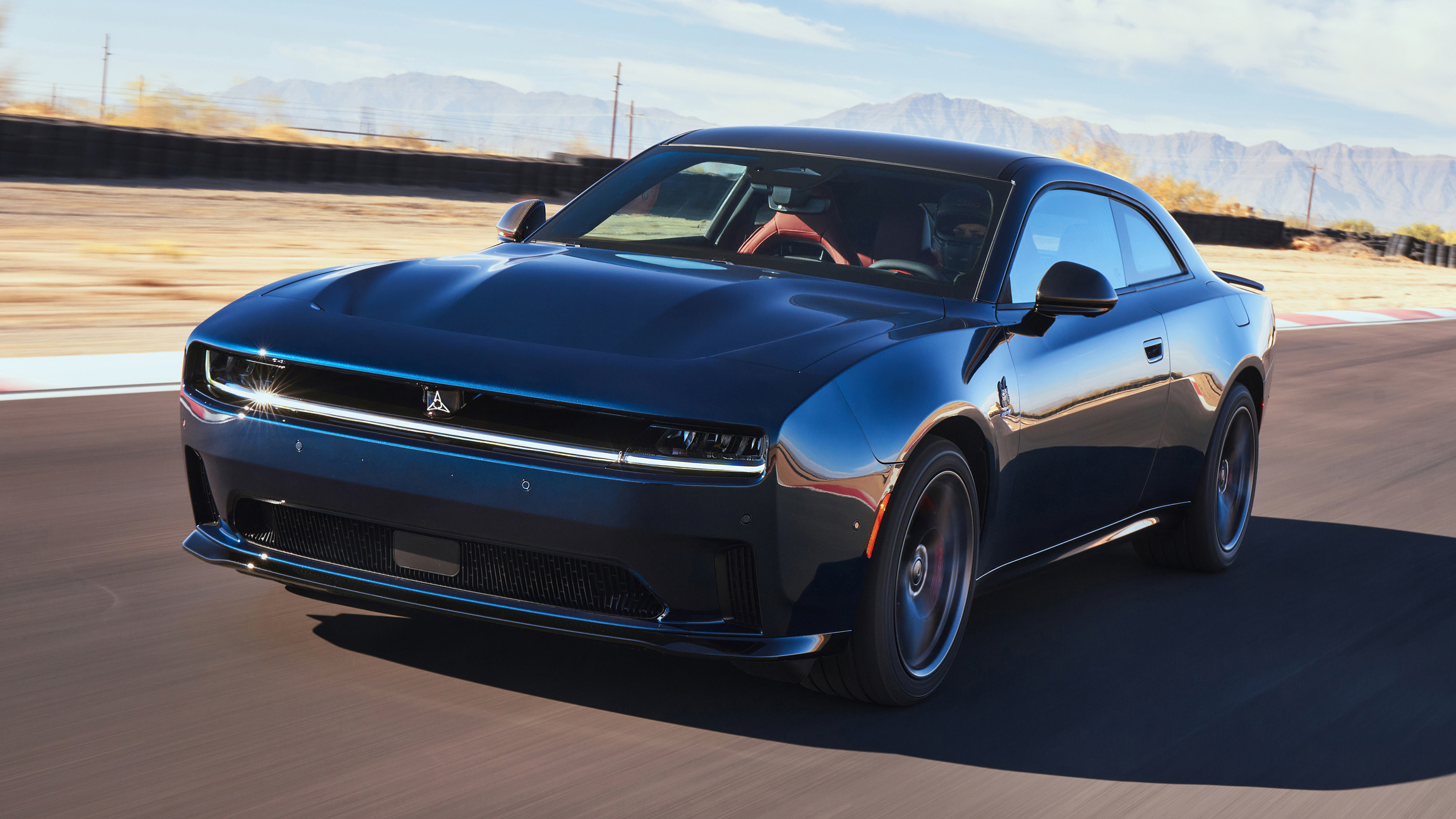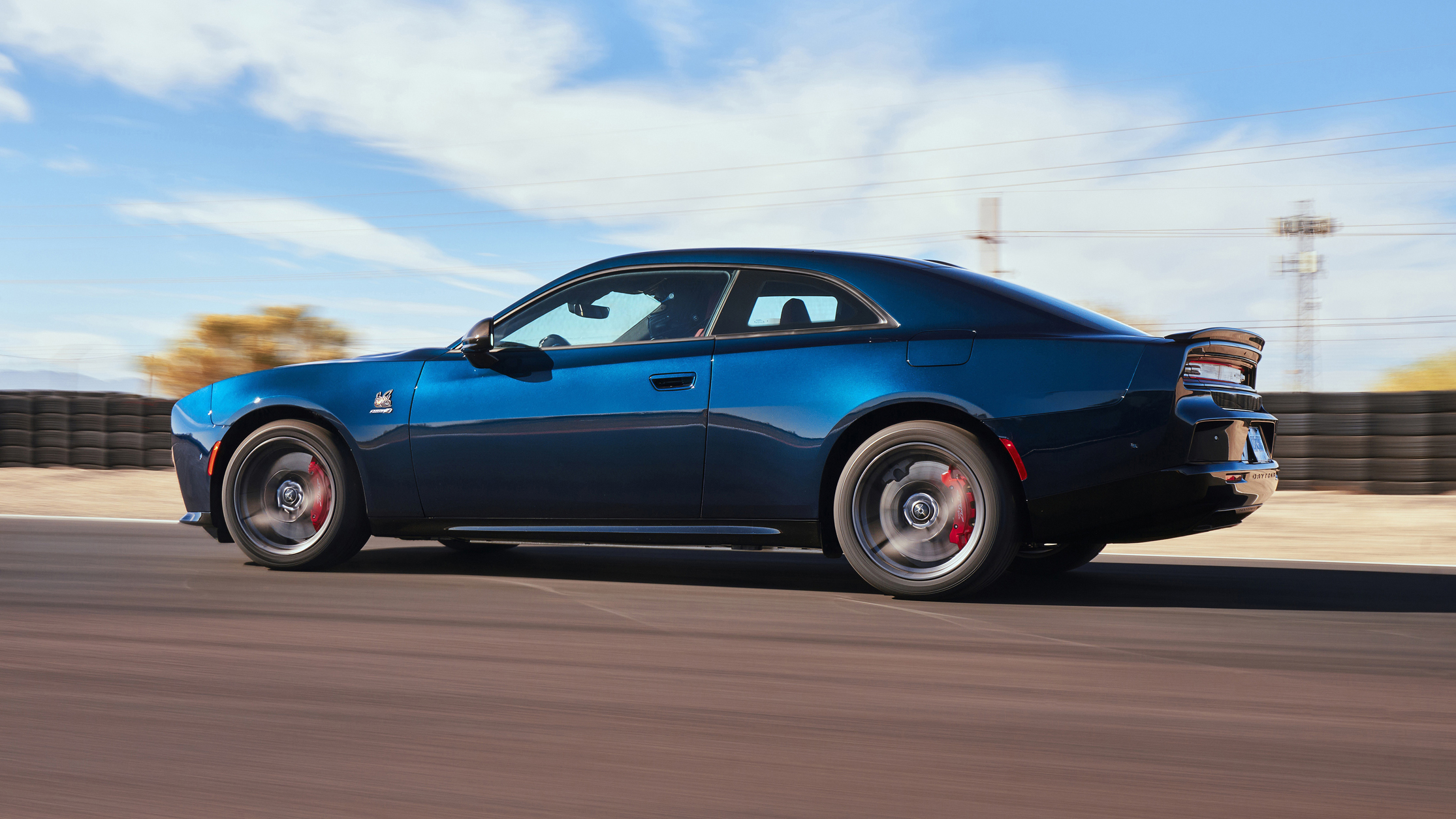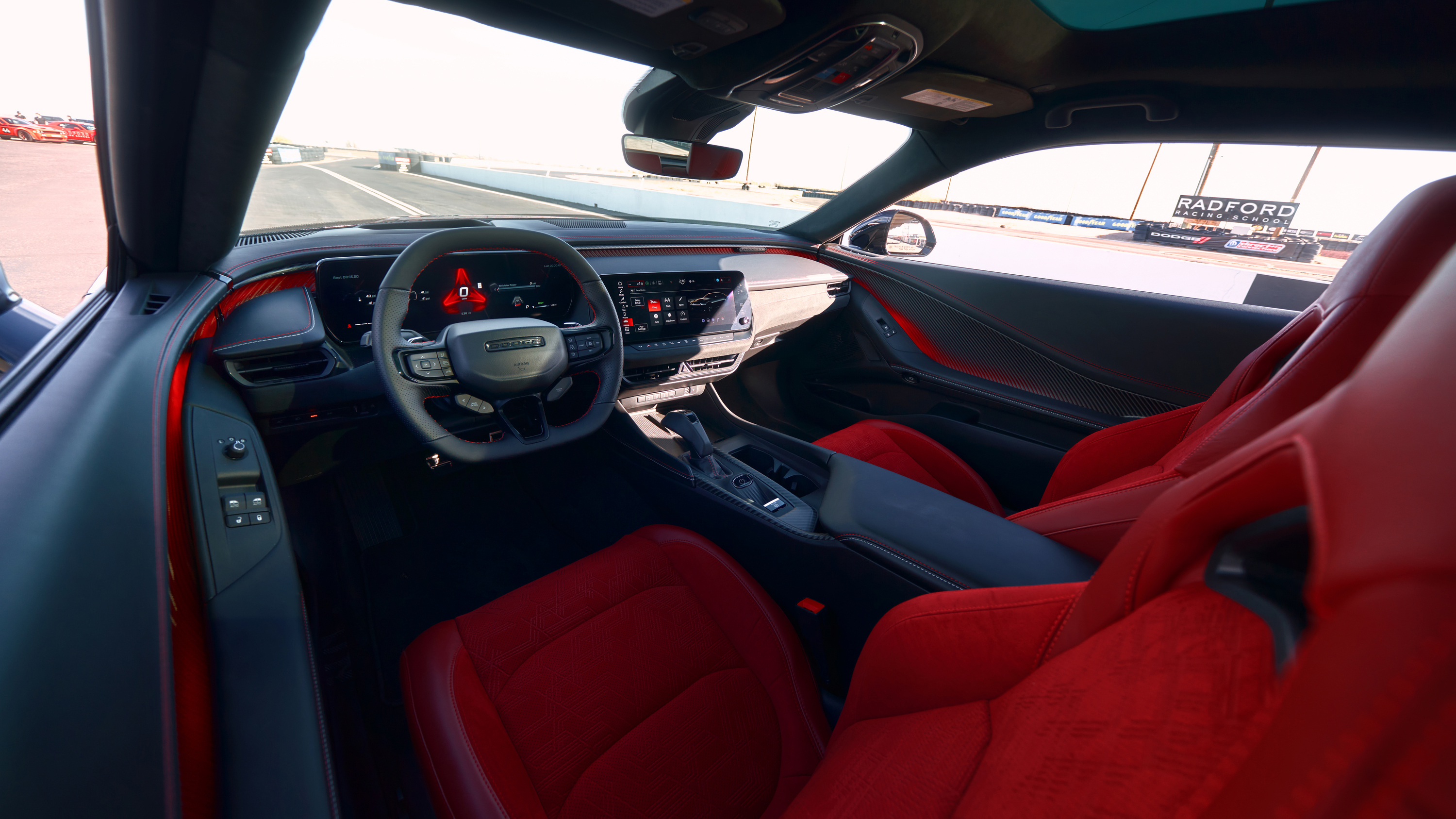
Dodge Charger review
Driving
What is it like to drive?
A bit like an EV, a bit like a muscle car. Let’s be honest, American-specific cars have a different infrastructure perspective, so they don’t tend to be suited to European tastes. Cruising around at the speed limit, the Charger is excellent. Quiet and calm, with a decent ride. The exhaust (we’ll just call it that) noise knocks back to the point you forget about it, and looking out over the bonnet and back over the rear arches, you really do feel like this big coupe has a lot of the right stuff in place.
It’s fast, instant and good at straight-line traction. But start to push it in the corners and everything gets a lot less precise. Part of that is due to the hefty kerbweight - into the realms of a European-sized 4x4 - and part is down to a drivetrain that feels like it could do with some more rear bias and a bit more front end bite. The steering’s too light, the brakes - although powerful - suffer from snatchiness that was common with earlier EVs as they push through brake regen into friction braking.
The other issue is that despite those chunky horsepower numbers, the Charger never really does that neck-snapping thrust thing you get with other EVs. More of a neck strain than a whip. Possibly more agreeable for daily use and there are faster ones coming, but if you’re used to a moderately high-bhp EV, it’ll feel a bit sedate. Not slow. Just not surprising.
But you’ve got the modes to make it more spunky, right?
To a point. The R/T model gets standard steel springs and dumb dampers, but the Scat Pack we drove gets a bit more. The switchable modes include all the usual stuff; Sport mode for the road to tighten up the dual-valve dampers, alter the steering weight and throttle map and all the usual configurables. Wet mode, Auto - it’s all there. But Track mode doesn’t do quite enough (it actually provides less power than Sport mode, the set-up what Dodge engineers thought best for track use), with the car feeling heavy and prone to understeer.
The steering rack is okay for speed, but too light, and even though you can mitigate the push with a bit more throttle, it never feels that comfortable. Long sweepers at high speed are less fun than they should be. That could be interpreted as a muscle car characteristic, but it’s not one that needs to exist in an EV.
As for the other modes, the most disappointing is the donut/drift mode. As mentioned, it locks out the front motor and stiffens the damping, but that leaves you with ‘only’ 335bhp. Which sounds like enough, but with 325-section rear tyres and decent tonnage pressing down on them, the Charger can’t do a standing burnout. Which isn’t useful, but is pointless fun.
You can get the car to drift, and initiating is pretty easy, but for some reason, this isn’t a car that ever feels like a natural. The limited-slip diff in the rear motor seems to lose interest once you’ve scrubbed a bit of speed at the end of a drift and feels like it defaults out to an open diff, killing the momentum. Similarly, if you whip the car into a donut and get any mention of rearward movement with the tyres spinning, it bogs down. A feature presumably there to protect mechanical bits, but not something you expect from an electric car. These are not useful metrics by any means, but given the pitch for the car as a testosterone-fuelled EV, it feels like a bit of a miss.
Still, there’s always Drag mode. Which is always AWD - no tyre-cleaning burnouts here, don’t forget - and features Race Prep mode (also available in Track) which conditions the battery for high-output discharge. You can manage more than ten 10.5-second quarters without losing performance, more than can be said of some other electric cars. But again, that’s quick but not mind-bending. That Kia EV6 GT we talked about will beat it with getting on for 100bhp less.
What’s it good at?
Lots of things. As mentioned, cruising around at normal speeds with the odd punchy overtake is largely a joy. The regen is good (accessed from paddles behind the steering wheel), and it actually has a deceleration noise, which is fun. Bigger, sweeping roads taken at rapid rather than rabid speeds are quite satisfying. And, in the US at least, it’s a real talking point.
Some of the older V8 heads are naturally suspicious of a ‘soy’ (their words) muscle car, but once they had a poke around the car, many were impressed and enthusiastic. It feels like a start, but not all the way there yet. Peak charge rate is 183kW, by the way, giving 10-80 per cent in about half an hour. Which is fine, if not spectacular.
Variants We Have Tested

Trending this week
- Car Review
BMW iX3







